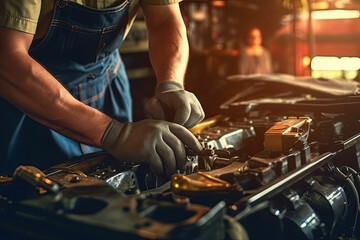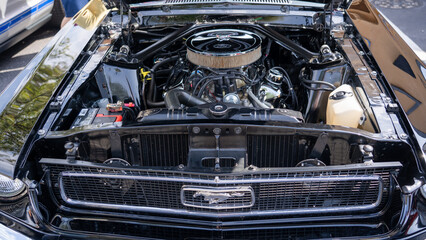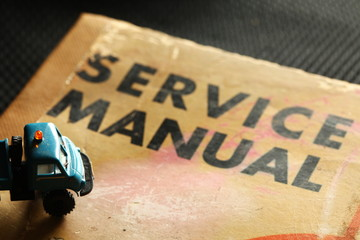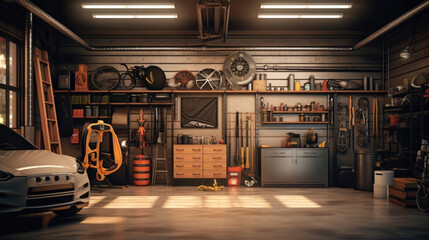Stuart Simonsen Billings, MT

About Stuart Simonsen of Billings, MT
Stuart Simonsen is a Billings, MT-based hobbyist and car enthusiast with a passion for restoring classic cars. Stuart bought his first car when he was in high school — a 64 ½ Mustang. When Stuart had to sell the car to attend college, he still remembers it fondly and believes that it kickstarted his passion for classic cars. In the present, Stuart is a car collector who has amassed quite a few vehicles, including a 67’ Shelby to replace his beloved 64 ½ Mustang.
Recently, Stuart restored a ’61 Corvette that started as a stock model by upgrading it with new generation chassis, new GM performance LS3 (Hot Cam) crate engine with 4L80 transmission, new Al Knoch interior, Dakota Digital instruments, and Vintage Air climate control. Stuart is currently working on other restoration projects and is always looking for new opportunities to bring vehicles to and beyond their former glory.
Stuart finds that one of the reasons why he is so passionate about restoring cars is because it helps preserve pieces of history and can even bring childhood memories depending on the model. Stuart mentions that car restoration provides enthusiasts with the opportunity to flex their creativity and mechanical skills while also allowing them to combine the more advanced technologies of today with the classic aesthetics and original designs of the past.
Classic Car Restoration Tips for Beginners

As a car restoration enthusiast and collector with years of experience, Stuart Simonsen enjoys sharing what he has learned about the hobby with newcomers just stepping into the scene. There is just so much to learn about classic car restoration, so much that even the most experienced enthusiasts learn new things every day.
In the interest of helping beginners get a clear picture of what a project requires, below are a few insights from Stuart to help make your first projects successful.
Choose a Realistic Project Car
Any car restoration project can be difficult, meaning that you should try not to make your first projects any harder than they have to be. This means avoiding working on models produced in limited numbers or that have poor parts supply. Some common project cars have great aftermarket support, making them much safer choices and empowering you to buy almost any brand new part that you need.
Experts find that most newcomers will have the best experience choosing a project car that already runs. This is because it is next to impossible to tell off the bat what it will take to get a car running until you are able to do so. It could be a quick fix just as easily as it could be a money pit. When inspecting your project car, always be on the look out for extensive rust or frame damage. These vehicles are already counted as a total loss by insurance companies and can be considered safety risks that are too costly to properly repair. Doubly so if frame repair and rust damage are not your specialties.
Try to Find a Manual
Before you have a firm grasp of the key differences between the makes and models of certain cars, it is always a good idea to ensure that you are able to find a manual to guide you through the repair. Guidebooks can go a long way towards helping you successfully restore any vehicle, because they will provide you with specific information on the exact model that you are working on.

Have a Project Timeline and Budget
Budgets are extremely important when working to turn your restoration dreams into reality. Stuart Simonsen of Billings, MT recommends creating a budget after you are finished assessing the vehicle and have an idea of what is required to repair it. Many experts recommend overestimating for a project budget, meaning that you should add up to 30% to the calculated figure to better ensure that you will have enough funds in case anything does not go according to plan. After making a budget that you are confident in, you can start planning and purchasing the parts.
A schedule is also an equally important piece of the puzzle. Having a timeline to stick to will be a lifesaver for staying focused and organized. It will also help prevent spontaneous purchases, roadblocks, or stalling along the way. Remember to give yourself a bit of leeway with your scheduling, because the unpredictable can and will happen over the course of any project.
Gather Tools, Equipment, and Parts
If you do not plan to outsource the restoration project to a specialist, you will need to invest in the right tools, equipment, and materials necessary to complete it at a high standard. Stuart finds that knowing the tools you will need to buy before starting will help a ton with the budget while saving both time and energy.
Commonly necessary tools include screwdrivers, pilers, sockets and a wrench, sheet metal scissors, a drill with drill bits, wire brushes, a floor jack, and electrical tools such as an air compressor and voltage checker. Aside from the simpler tools, you may also need access to equipment such as jack stands, a grinder, an engine crane and engine stand, a welder, and a blowtorch as well. Depending what you are looking to restore on or inside the vehicle, this is also a good time to explore which car parts you will need throughout the project. Try to avoid buying parts in advance, and instead buy only as you need them.

Join a Classic Car Club or Online Group
When you are first starting out, you will be constantly learning. Those who are interested in classic cars and restoration will be great resources for you as you develop. Classic car clubs are full of friendly people who are passionate about their hobby and have been through more than a few restorations themselves. Being able to access this well of experience can save you a lot of time and money, as they will probably know more about a car, its weakness, common defects, etc. than you do initially. Online forums are valid alternatives or supplements to traditional club memberships, especially if you are not able to find a classic car club that meets often in your area.
Know Your Limits
It is very common to bite off more than you can chew with a restoration project, and this goes for both experienced restorers and newcomers alike. With this in mind, it is important to recognize your limits and accept the possibility that you may not be able to complete every job that is required to restore a car to the highest standards.
If you start to feel as though you cannot finish a project on your own, that is completely okay! You are actually with the vast majority of car restorers. Instead of beating yourself up, try asking around, getting recommendations, and making sure that you have the cash on-hand so that a pro can handle the most difficult or specialized parts of the project. Stuart finds that some jobs are almost always handled best by a pro. For example, spray painting can take a lot of time and money while leaving huge mess when it is done at home. On top of this, you will need to appropriately handle toxic materials if you want to get the best results. A pro will be able to do this job more easily and efficiently!
For More from Stuart Simonsen of Billings, MT

This website was created as a one-stop-shop for content based on Stuart Simonsen’s car restoration and collection insights. Interested in more from Stuart Simonsen of Billings, MT? Tune in to the blog for information on topics such as:
- Car Restoration Resources
- Car Care Tips
- Car Collection Information
- Updates on Stuart’s Past and Present Projects